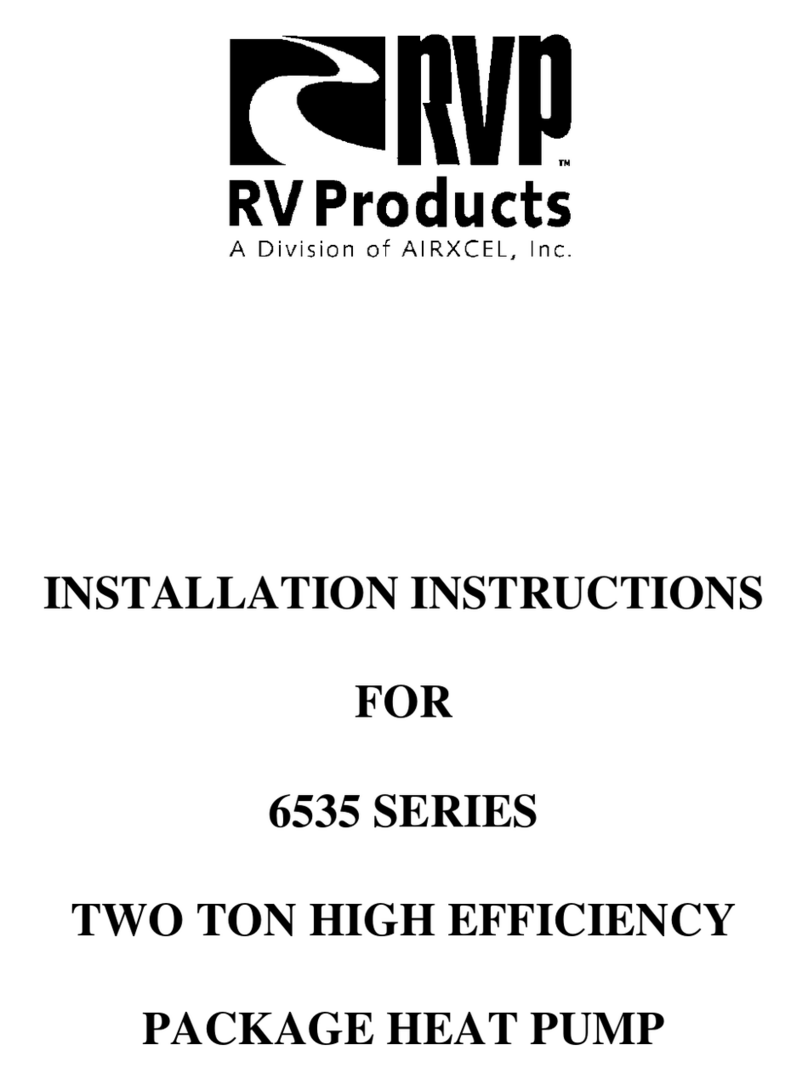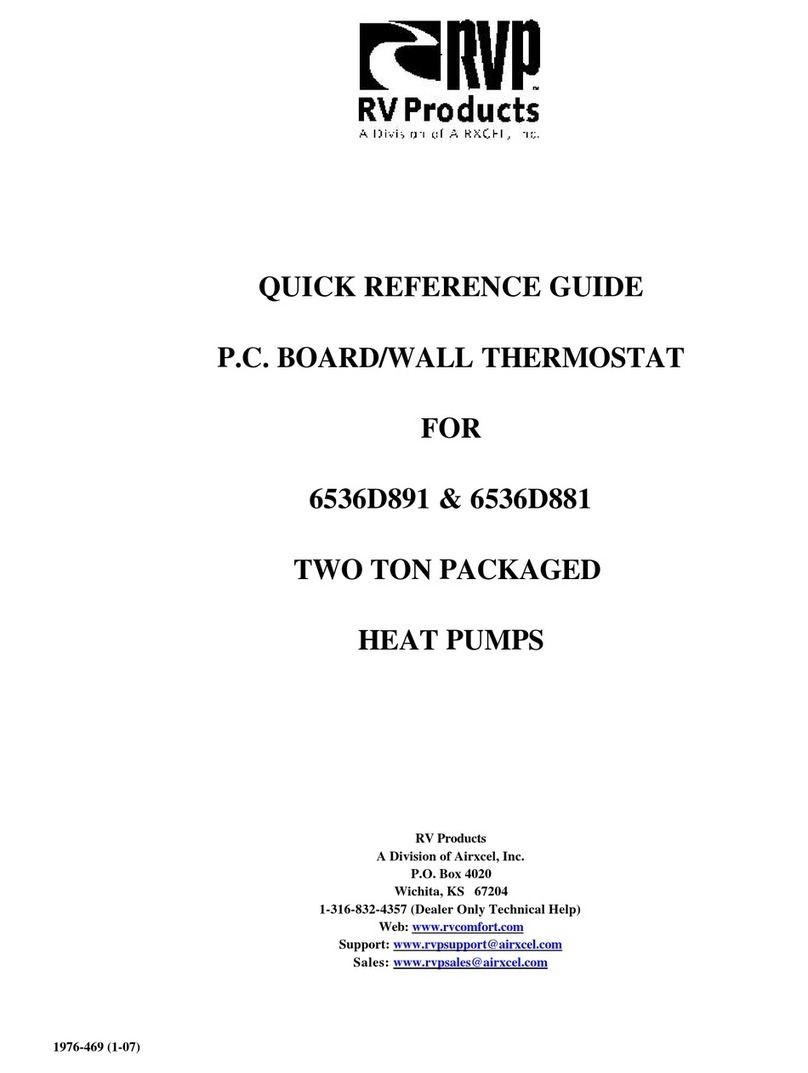
3
II. HEAT PUMP SIZING
Heat pumps should be rated primarily by their ability to cool.
The thermal measurement used for detecting a gain or loss of
heat is the British Thermal Unit (BTU). One (1) BTU is the
amount of heat required to raise the temperature of one pound
of water by one degree Fahrenheit. A heat pump rated at
13,500 BTUH can remove 13,500 BTU’s of heat in one hour.
The ability of a heat pump to cool down a vehicle or maintain
a consumer desired temperature is dependent upon the heat
gain of the vehicle. The physical size, the amount of window
area, the quality and amount of insulation, the position
exposure to sunlight, the number of people using the vehicle
and the outside temperature may increase the heat gain to
such an extent that the capacity of the heat pump is exceeded.
As a general rule, air supplied (discharge air) from the heat
pump will be 15 to 20 degrees cooler than the air entering
(return air) the ceiling assemblies bottom air grilles.
For example, if the air entering the heat pump is 80 degrees
F. (return air), the supply air (discharge air) into the vehicle
will be 60 to 65 degrees F. As long as this temperature
difference (15 to 20 degrees) is being maintained at the heat
pump, the heat pump is operating properly.
Again, give careful consideration to the vehicle heat gain
variables. During extreme outdoor temperatures, the heat
gain of the vehicle may be reduced by:
‚parking the vehicle in a shaded area
‚keeping windows and doors closed
‚avoiding the use of heat producing appliances
‚using window shades (blinds and/or curtains)
For a more permanent solution to high heat gain situations,
additional vehicle insulation, window awnings and/or
window glass tinting should be considered.
A heat pump should not be considered as a total replacement
for a furnace. At ambient temperatures below freezing, the
heat pump will not operate.
III. SELECTING AN INSTALLATION LOCATION
Your RV Products heat pump has been designed for use
primarily in recreational vehicles.
Is the roof of the vehicle capable of supporting both the roof
top unit and ceiling assembly without additional support
structures? Inspect the interior ceiling mounting area to
avoid interference with existing structural members such as:
bunks, curtains, tracks or room dividers. The depth of the
ceiling assembly shroud is 3". Be sure to check clearance for
doors which must be swung open (refrigerator, closets,
cabinets).
Most of the time, roof mount heat pumps are installed at
existing roof vent locations. If there are no roof vents
(existing mounting hole), the following placement locations
are recommended.
Motor Homes - a single unit or the forward of two units
should be mounted within 9 feet of the drivers compartment.
Travel Trailers or Mini-Homes - a location should be selected
that is near the door slightly forward of the vehicle center
length.
Vans - location should be in the center of the roof (side to
side - front to back).
Truck with Camper - location should be between 4 or 5 feet
from the rear of the camper to achieve maximum cooling
effect.
IV. INSTALLING THE ROOF TOP UNIT
DANGER
SHOCK HAZARD
DISCONNECT ALL POWER TO THE VEHICLE
BEFORE PERFORMING ANY CUTTING TO THE
VEHICLE. CONTACT WITH HIGH VOLTAGE CAN
RESULT IN EQUIPMENT DAMAGE, PERSONAL
INJURY OR DEATH.
IMPORTANT
TO PREVENT DAMAGE TO THE WIRING AND
BATTERY, DISCONNECT THE BATTERY CABLE
FROM THE POSITIVE BATTERY TERMINAL
BEFORE PERFORMING ANY CUTTING TO THE































